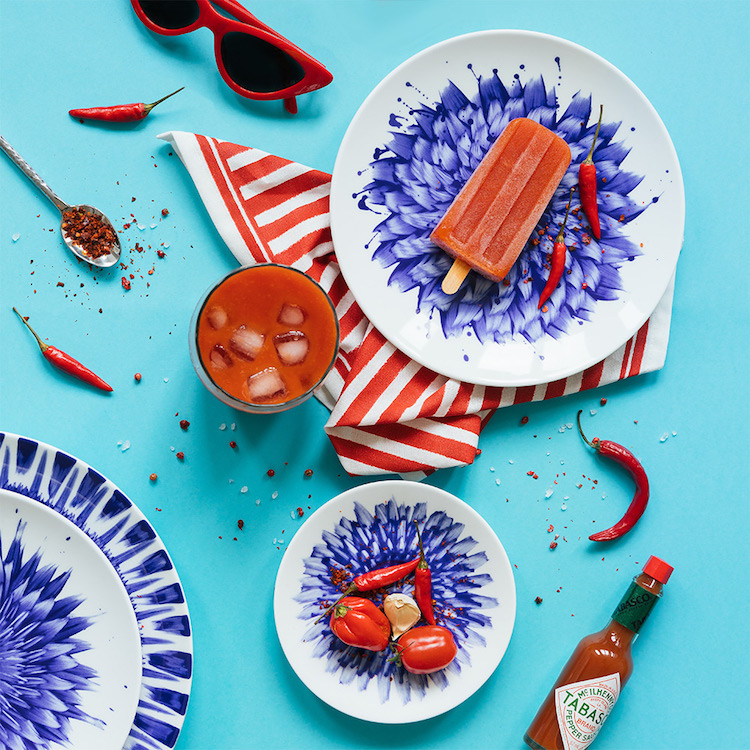L.A.-based, Israeli ceramic artist Zemer Peled launched a new tableware collection in collaboration with leading porcelain manufacturer Bernardaud.
IN BLOOM – The new Cobalt Flower Collection strives to capture the movement and dynamism associated with Peled’s sculptural work. Jubilant blue flowers burst forth from plates, cups, saucers and bowls, vibrating with botanical energy. And as always with Peled’s creations, there is more than meets the eye.

Peled was inspired to create this collection during her residency at the Bernardaud Porcelain Factory in Limoges, France in Spring 2017. At the factory she was able to spens time observing and understanding the complexity of creating a porcelain piece from Bernardaud’s master painters and designers, ultimately coming to engage with her materials in an entirely new way than in her previous work.
It is with great enthusiasm that she became interested in the know how of decoration, alongside an expert who has been working at Bernardaud for more than 30 years. She learned to perform a quick, precise gesture and to perfectly control the pressure of her brush to achieve the desired effect: a decor where you feel the gesture and texture.


The collection is informed by Peled’s three-dimensional practice which she translates onto the two-dimensional surface of Bernardaud’s porcelain vessels. Peled has always sought to capture the movement of the natural world and to infuse the stoic medium of porcelain with organic rhythm––playful and vivid brushstrokes are applied while the vessel is on a spinning wheel (see the process in a video below).
From afar, the Cobalt Flower Collection is exactly that: flowers. However, those who slow down for closer inspection will see the cohesive image dissolve into Peled’s lively brush marks.





Watch this mesmerizing video of Peled painting one of her cobalt plates:
Text (edited) from press release.
About the artist: Zemer Peled’s work examines the beauty and brutality of the natural world. Her sculptural language is informed by her surrounding environment and landscapes, and engages with themes of memories, identity, and place. The association of porcelain with refinement and civilization is turned on itself when broken into shards. In Peled’s organic formations, a whole from the shards is recreated, estranged from its original context, but nonetheless unified by an overall cohesiveness of movement and composition.
Love or loathe this porcelain collection from the world of contemporary ceramic art and contemporary ceramics? Share your thoughts in the comments section below.

Add your valued opinion to this post.